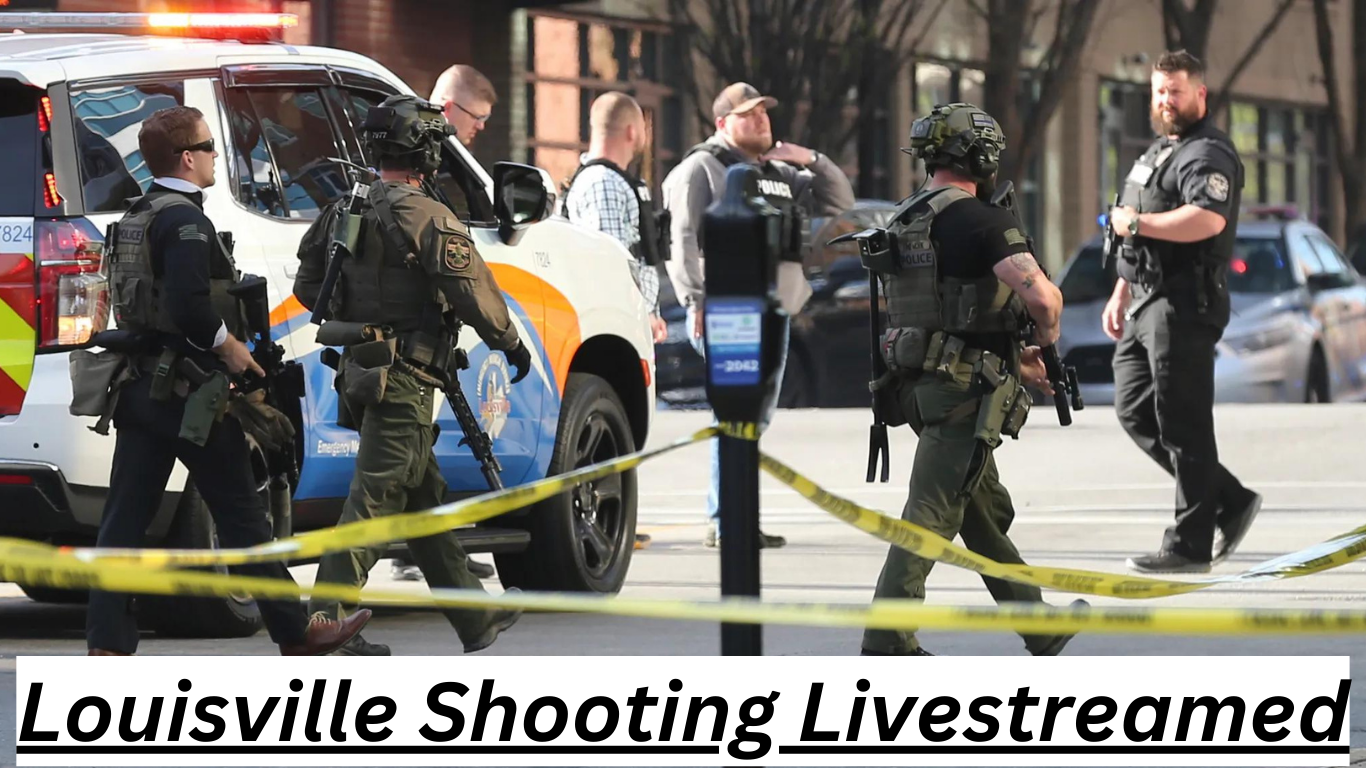In a tech-driven world, the livestreamed Louisville shooting stunned the online community with real-time horror. The shocking reality of such tragedies being broadcast instantly has raised important questions about our digital age and its impact on society. Let’s delve into the complexities surrounding this harrowing incident and explore the implications it holds for both witnesses and viewers alike.
The Role of Social Media in Livestreaming the Tragedy
The role of social media in livestreaming tragic events like the Louisville Shooting Livestreamed is both complex and impactful. Platforms like Facebook, Instagram, and Twitter have become powerful tools for sharing real-time information, but they also present challenges when it comes to sensitive content. The Louisville shooting was broadcast worldwide within seconds, thanks to social media’s instant reach.
Livestreaming tragedies can lead to a phenomenon known as “vicarious trauma,” where viewers experience emotional distress as if they were physically present at the scene. This raises important questions about how we consume such graphic content online and its effects on our mental health.
While social media provides a platform for awareness and mobilization during crises, it also brings ethical dilemmas regarding privacy, consent, and responsible reporting of violent incidents. As technology continues to evolve rapidly, society must navigate these complexities with care and consideration for all those impacted by such devastating events.
Impact on Witnesses and Viewers
The live-streamed footage of the Louisville shooting profoundly impacted viewers and witnesses worldwide. The shocking visuals thrust individuals into a state of disbelief as they watched the tragedy unfold in real time.
For those who witnessed it live, the experience was jarring and distressing, leaving a lasting imprint on their psyche. The graphic nature of such content can lead to feelings of helplessness, trauma, and even desensitization towards violence.
Viewers unintentionally stumbling upon the livestream were abruptly exposed to a harrowing, unexpected event online. The sudden exposure to such intense imagery can evoke strong emotional reactions ranging from anger to sadness.
The widespread dissemination of tragic events through social media platforms highlights the need for sensitivity when sharing or viewing distressing content. As we navigate this digital age, it’s essential to consider the psychological impact on both witnesses and viewers when engaging with such material online.
Addressing the Issue of Online Violence and Graphic Content
The proliferation of online violence and graphic content is a growing concern in today’s digital age. The ability to livestream tragic events like the Louisville Shooting Livestreamed has raised important questions about the ethical boundaries of sharing such disturbing footage on social media platforms. While it’s essential to raise awareness about real-world issues, the line between spreading information and potentially glorifying violence can easily blur.
Addressing this issue requires a delicate balance between freedom of expression and responsible online behavior. Platforms must enforce stricter guidelines to swiftly remove violent content and support users exposed to trauma. Moreover, educating the public about the impact of consuming such graphic content is crucial in fostering empathy and understanding towards those affected by these tragedies.
As technology continues to evolve, so must our approach toward handling sensitive topics online. By promoting empathy, compassion, and responsible use of social media platforms, we can work towards creating a safer digital environment for all users.
Legal Implications for Livestreaming Crimes
The legal implications of livestreaming crimes like the Louisville Shooting Livestreamed are complex and multifaceted. While social media platforms have guidelines against violent content, enforcing these policies in real time is challenging. When crimes are live-streamed, questions arise about the platform’s, streamer’s, and viewers’ responsibilities.
Law enforcement faces hurdles in preserving evidence from live streams for investigations while balancing privacy rights. Determining jurisdiction and laws for cross-border streamed crimes adds complexity to prosecuting offenders effectively. As technology evolves rapidly, lawmakers must adapt regulations to keep pace with emerging challenges related to online violence.
Courts grapple with issues of admissibility of live-streamed evidence and ensuring fair trials amidst widespread public exposure to graphic content. The legal landscape of livestreamed crimes evolves as landmark cases set precedents shaping future digital law interpretations.
Ethical Considerations for Sharing and Viewing Tragic Events Online
In the age of social media, ethical considerations for sharing and viewing tragic events online have become more crucial than ever. As individuals scroll through their feeds, they may unexpectedly come across distressing content that can have lasting effects on their mental health.
It is important to pause and reflect before hitting that share button. Consider the impact it may have on those who see it – from triggering trauma to desensitizing viewers to violence. Ask yourself: Is sharing this truly necessary? Will it contribute positively to a dialogue or merely sensationalize a tragedy?
When it comes to viewing such content, be mindful of your well-being. It’s okay to look away or take a break if you feel overwhelmed. Remember that consuming graphic material repeatedly can lead to compassion fatigue and emotional distress.
As we navigate the digital realm, let’s strive for empathy and sensitivity in how we engage with tragic events online. Let’s prioritize respect for those affected by these incidents and approach them with thoughtfulness and care.
Conclusion: Importance of Responsible Use of Technology in Society
In a world where technology has the power to instantly broadcast tragedies like the Louisville shooting, individuals and platforms alike must exercise responsibility. The ability to live stream events in real-time comes with great power, but also great ethical considerations.
As we navigate this digital age, let us remember that behind every screen are real people experiencing real emotions. Let us use technology not only as a tool for information sharing but also as a force for empathy and understanding.
By promoting responsible use of technology in society, we can work towards creating an online environment that prioritizes compassion and respect for one another. Let us be mindful of the impact our actions have on others, both online and offline.
Together, we can strive to build a digital landscape that upholds values of kindness, decency, and humanity. It is up to each one of us to make conscious choices in how we engage with technology and shape the narrative of our interconnected world.




